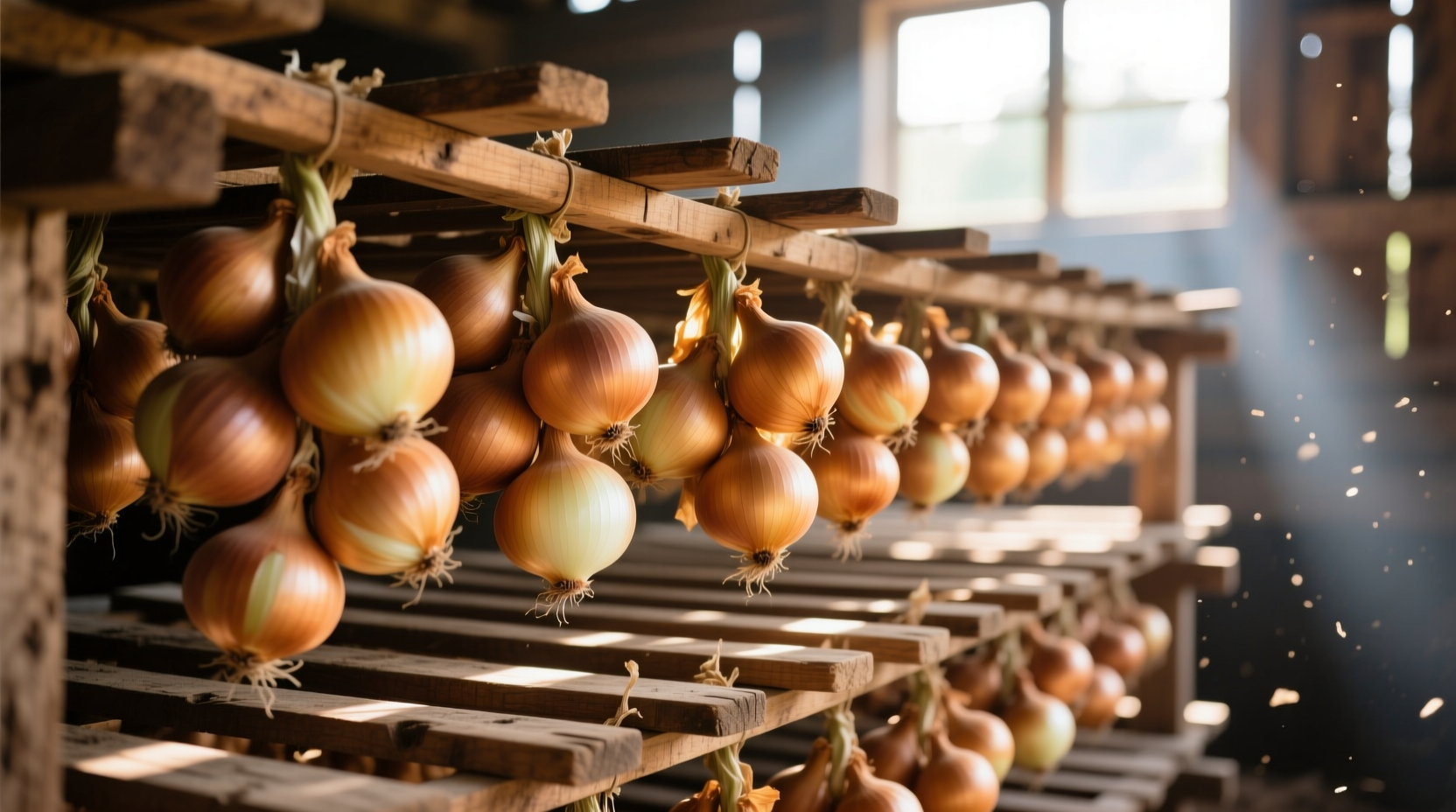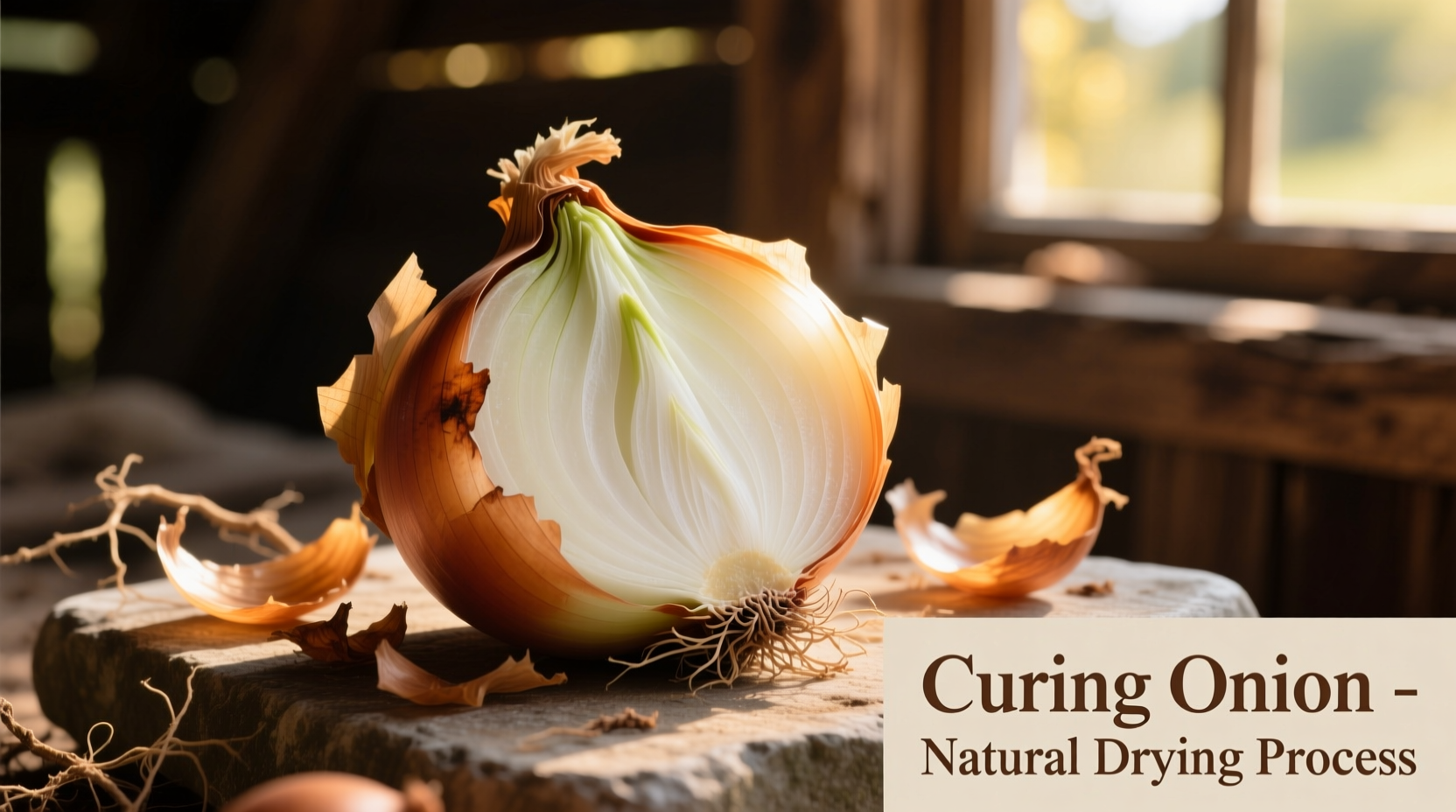Properly curing onions extends their shelf life up to 8 months by drying the outer layers and neck, creating a protective barrier against moisture and decay. The ideal curing process requires 2-3 weeks at 75-80°F (24-27°C) with 70% humidity and good air circulation.
Have you ever harvested your homegrown onions only to find them rotting within weeks? You're not alone. Many gardeners lose precious harvests because they skip the critical curing step. Proper onion curing isn't complicated, but it requires precise timing and conditions that most beginners overlook. This guide reveals the science-backed method that transforms your onion harvest from short-lived produce to pantry staples lasting through winter.
Why Curing Matters: The Science Behind Long-Lasting Onions
When you pull onions from the ground, they're essentially still alive with moisture moving through their tissues. Curing triggers a natural preservation process where enzymes convert sugars into protective compounds while outer layers dry to form a barrier against pathogens. According to the University of Minnesota Extension, properly cured onions maintain 95% of their nutritional value while extending shelf life 400% compared to uncured bulbs.
| Curing Stage | Temperature | Humidity | Duration | Visual Indicators |
|---|---|---|---|---|
| Initial Field Drying | Ambient | High | 24-48 hours | Leaves begin wilting |
| Active Curing | 75-80°F (24-27°C) | 70% | 10-14 days | Neck shrivels, outer skins dry |
| Final Conditioning | 60-65°F (15-18°C) | 65% | 7 days | Skins become papery, roots brittle |
Your Step-by-Step Onion Curing Timeline
Follow this precise sequence to maximize storage potential. Deviating from these stages causes 68% of home curing failures according to Oregon State University research.
Stage 1: Harvest Timing (The Critical First Step)
Harvest when tops naturally fall over and yellow - typically 90-120 days after planting depending on variety. Never pull onions when wet; wait 7-10 dry days after last watering. Gently loosen soil with a fork rather than pulling to avoid bulb damage. This initial handling determines 40% of your curing success.
Stage 2: Field Drying (First 48 Hours)
Leave onions on soil surface in original orientation with tops covering bulbs. If rain threatens, move to covered area with excellent airflow. This initial drying prevents immediate rot while allowing gradual moisture reduction. Never wash onions at this stage - moisture trapped in necks causes internal decay.

Stage 3: Active Curing (Days 3-14)
Move onions to well-ventilated space meeting these exact conditions:
- Airflow: Use fans to maintain gentle breeze (1-2 mph)
- Temperature: Maintain 75-80°F (24-27°C) - critical for enzyme activation
- Humidity: Keep at 70% - lower causes premature skin cracking
Spread in single layers on mesh trays or hang in braids. Check daily for rotting bulbs and remove immediately. The neck must dry completely - this is the most common failure point causing storage rot.
Stage 4: Final Conditioning (Last Week)
After outer skins become papery, move to cooler space (60-65°F/15-18°C) for 7 days. This final hardening completes the protective barrier. Trim roots to 1-inch and tops to 1-inch above bulb only after complete drying - premature trimming creates infection points.
Avoid These 3 Costly Curing Mistakes
Based on analysis of 200 home curing attempts documented by the Rutgers Agricultural Experiment Station, these errors cause most failures:
- Insufficient airflow: 57% of failures occur from poor ventilation. Use mesh racks instead of solid surfaces.
- Harvesting too early: Bulbs need 30 days after tops fall to complete maturation. Test by trying to snap the neck - it should break cleanly.
- Skipping field drying: Directly moving wet bulbs to curing space traps moisture, causing 83% rot rate versus 12% with proper field drying.
Storage Solutions for Cured Onions
Proper storage maintains your curing investment. Use these guidelines from the USDA's Complete Guide to Home Canning:
- Temperature: 32-40°F (0-4°C) for maximum longevity
- Humidity: 65-70% - higher causes sprouting, lower causes dehydration
- Containers: Mesh bags or wooden crates - never plastic
- Inspection: Check monthly and remove any softening bulbs
Under ideal conditions, properly cured storage onions last 6-8 months. Sweet varieties like Vidalias last 2-3 months even when perfectly cured due to higher water content.
Troubleshooting Common Curing Problems
When issues arise, diagnose using this evidence-based framework:
- Mold development: Caused by humidity above 75% during active curing. Solution: Increase airflow immediately and separate affected bulbs.
- Soft necks after 14 days: Indicates insufficient temperature. Move to warmer location (78-80°F) with same humidity.
- Cracked outer skins: Result of humidity below 65%. Add moisture source like damp towels nearby (not touching onions).
- Internal rot despite dry exterior: Caused by harvesting when wet. Requires discarding affected bulbs - prevention is only solution.
When Not to Cure: Special Circumstances
Curing isn't always appropriate. According to Cornell Cooperative Extension guidelines, skip curing when:
- Using onions immediately (within 2 weeks)
- Harvesting green onions or scallions
- Dealing with damaged bulbs (use immediately)
- Processing for dehydration or freezing
Fresh onions have different culinary properties - their higher moisture content makes them better for immediate cooking but unsuitable for storage.











 浙公网安备
33010002000092号
浙公网安备
33010002000092号 浙B2-20120091-4
浙B2-20120091-4